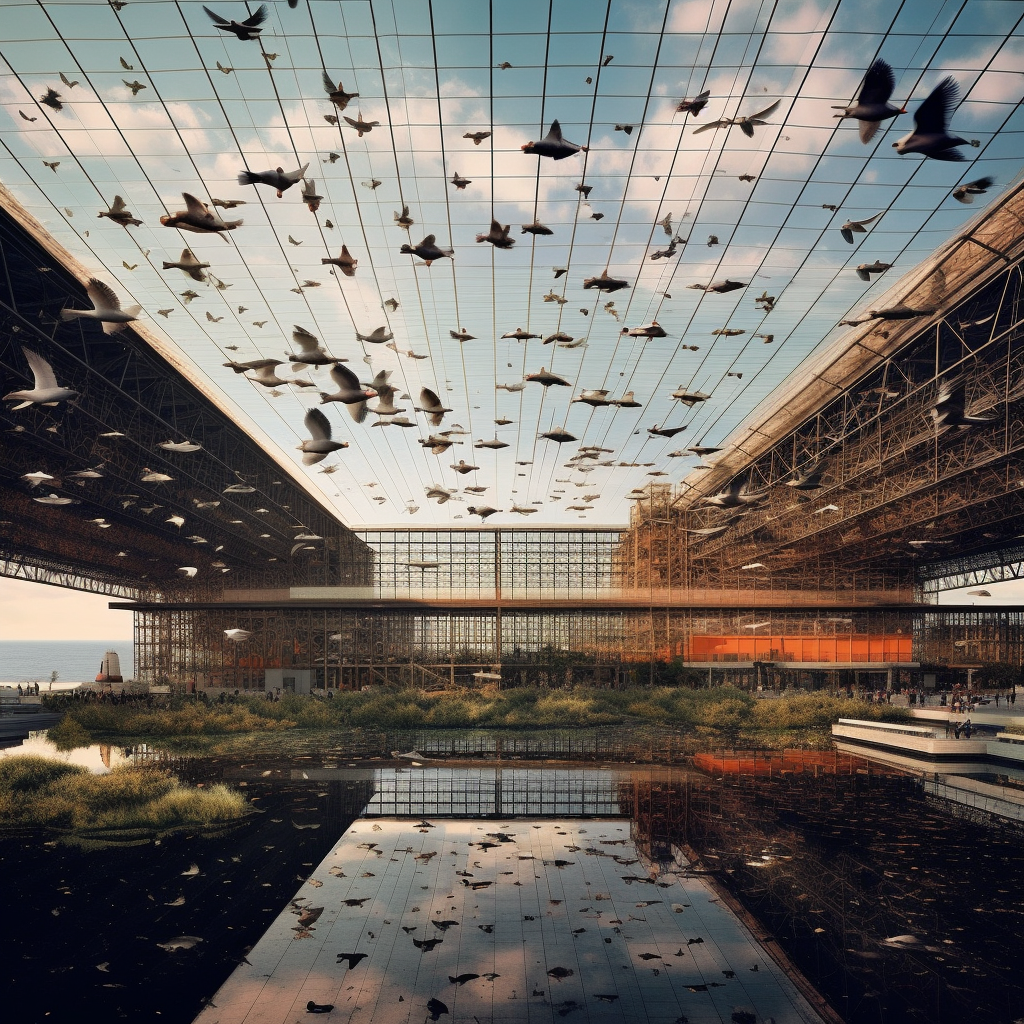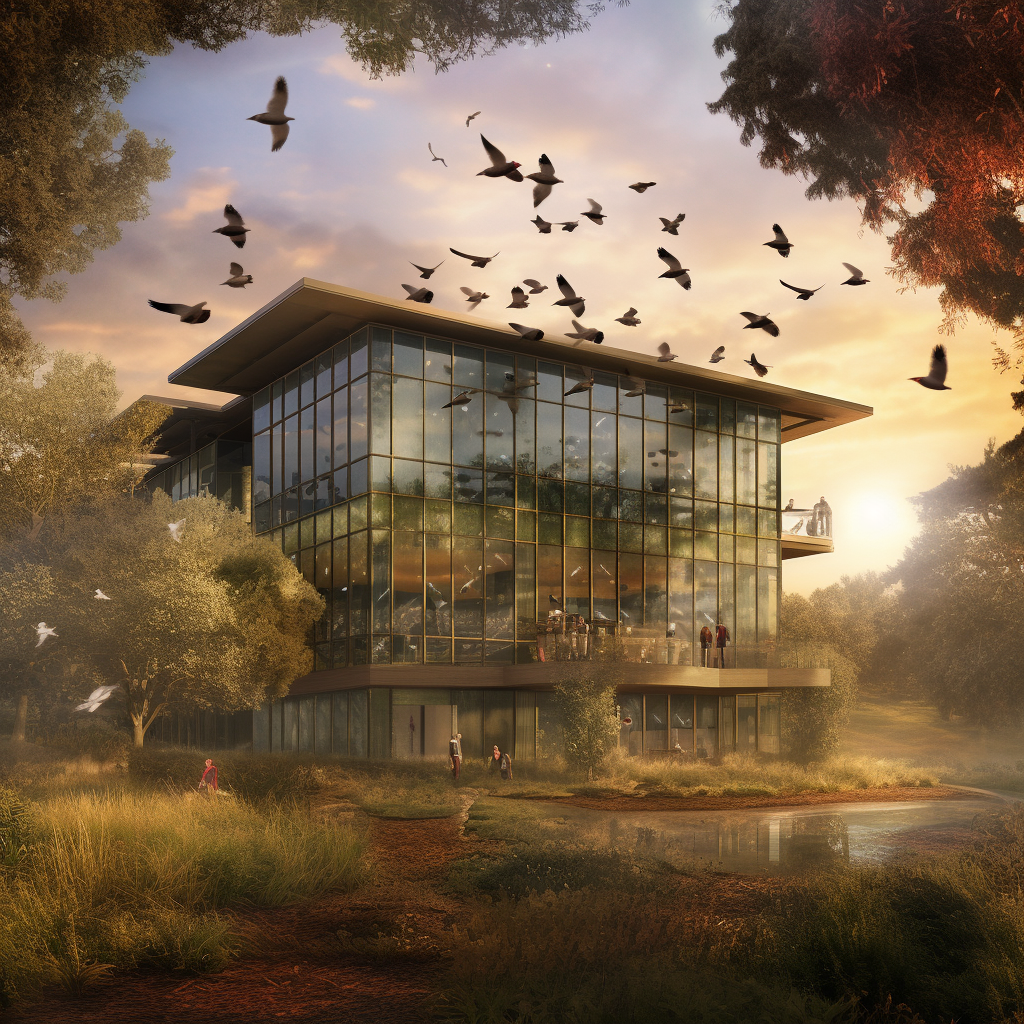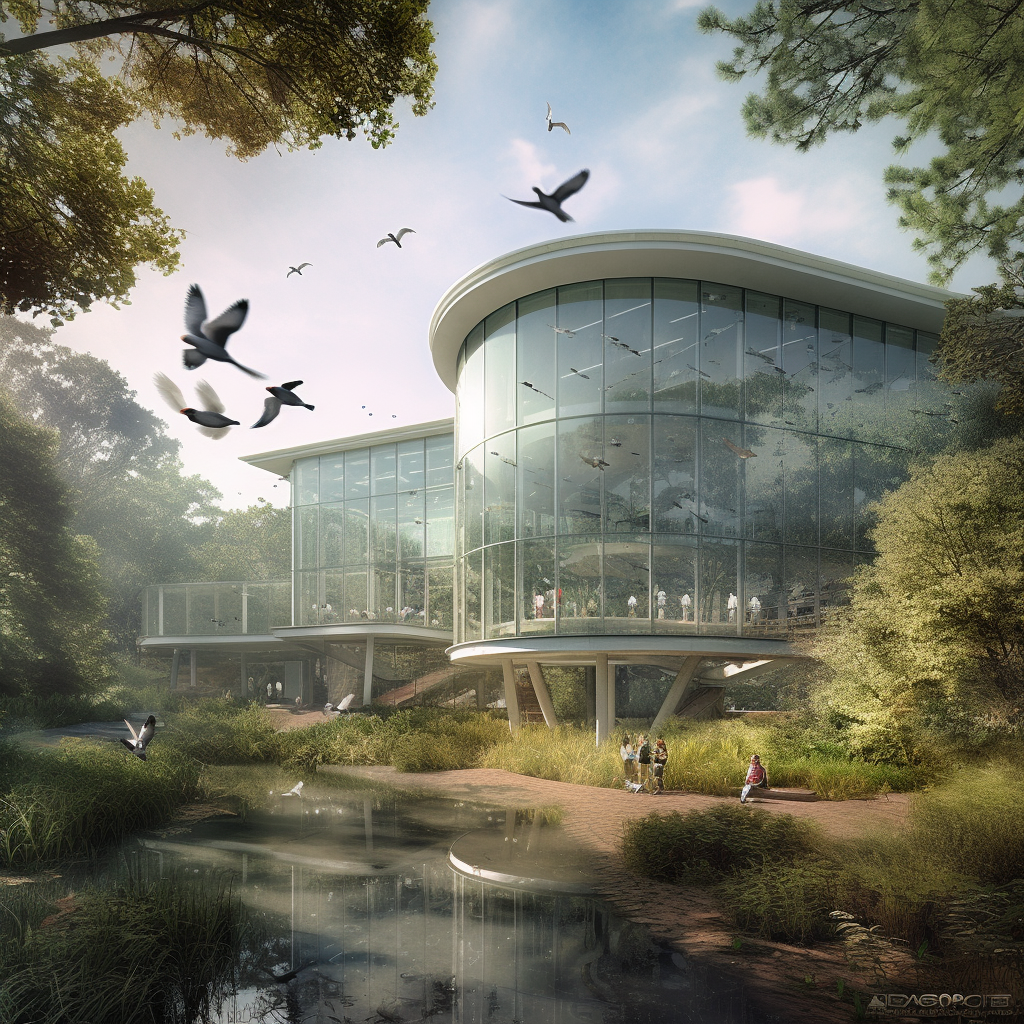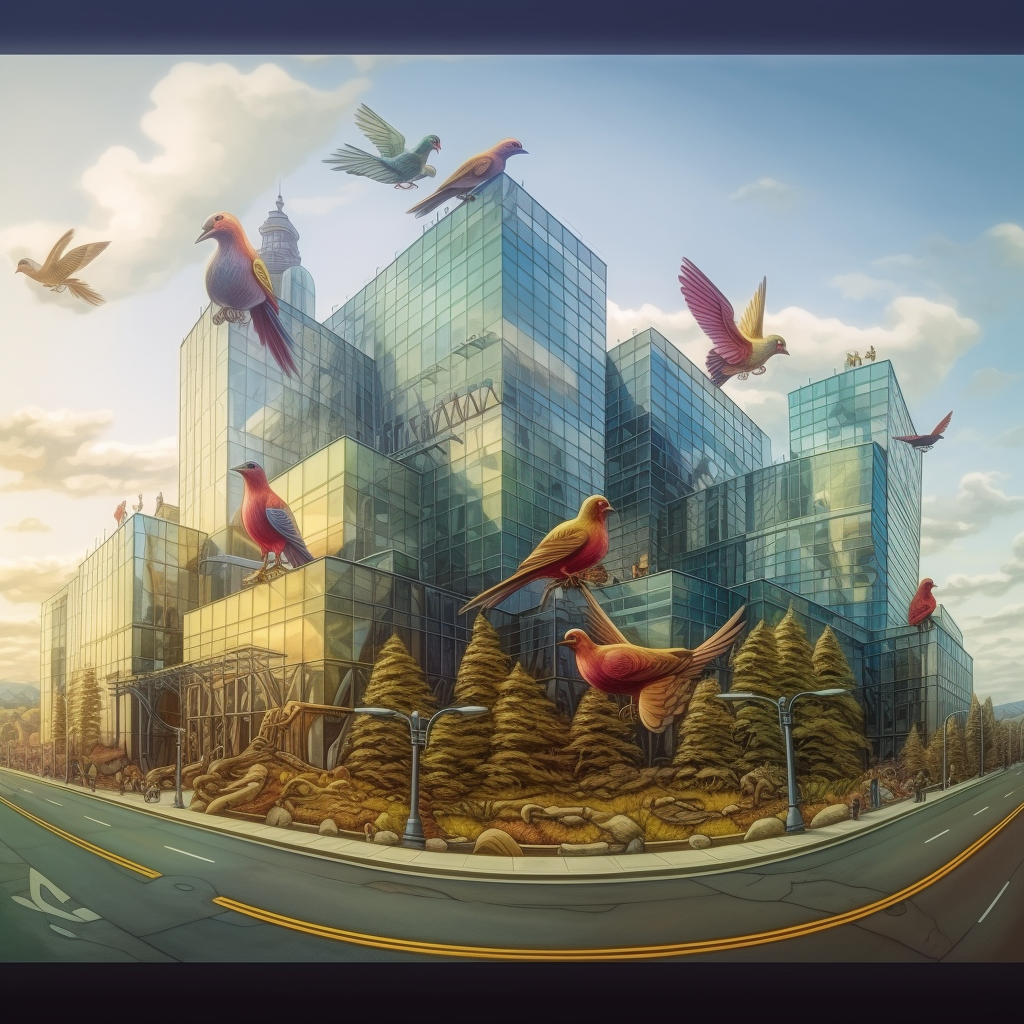Invisible Killer: How Modern Architecture is Waging a Deadly War on Birds, and the Surprising Solution!
Skyscrapers, with their gleaming glass and steel structures, have become the epitome of urban modernity. However, their reflective surfaces, illuminated towers, and high-speed winds present a shocking invisible threat: they’re a deadly hazard for birds. In North America alone, a staggering estimated one billion birds die each year due to collisions with buildings.
But fear not, because a stunning solution is on the horizon. The realm of architecture is undergoing a radical shift, with bird-friendly design becoming an increasingly influential factor in shaping our cities.
The threat posed by modern architecture to birds is a considerable one. The Javits Center in New York, for example, was once dubbed the number one bird killer in the city due to its glassy facade. Birds, unable to distinguish the reflective surface from the sky or nearby greenery, would fly into the structure and often die from the impact.
However, this grim situation was significantly improved when the Javits Center underwent a renovation in 2014 to incorporate bird-friendly design features. The reflective glass was replaced with a fritted variety, dotted with patterns that birds could recognize as a solid barrier. After the renovation, bird deaths plummeted by an astounding 90%. The Javits Center’s transformation signifies how retrofitting our existing structures can result in an immediate and significant decrease in bird fatalities.
At the forefront of this architectural revolution are organizations like the American Bird Conservancy and the National Audubon Society. They advocate for bird-friendly design and promote building certifications like LEED Pilot Credit 55. This specific credit encourages the integration of bird-safe design through a point system, which then contributes to a building’s overall LEED certification.
And there’s more to bird-friendly design than just fritted glass. Consider San Francisco’s Public Utilities Commission Building, where bird-friendly strategies were incorporated right from the outset. To deter birds from hitting windows, the architects installed specially designed exterior light shelves that reduce window reflection during the day and minimize light pollution at night.
Moreover, there’s no need to sacrifice aesthetic appeal when implementing bird-friendly design. The bullet-shaped Gherkin building in London, known for its spectacular diamond-patterned facade, has bird deflecting strategies built into its design. By integrating bird protection measures at the design stage, the architects of the Gherkin successfully minimized the building’s impact on bird populations without compromising its iconic visual appeal.
Toronto’s Royal Ontario Museum, a strikingly modern architectural marvel with a crystalline design, incorporated bird-friendly features without sacrificing its aesthetic appeal. The museum used patterned glass, light control, and external screens to minimize bird collisions. The result? A reduction in bird fatalities and an iconic building that still dazzles visitors and locals alike.
Even landscaping plays a crucial role. The New York Times Building features a rooftop garden with native plant species. The garden not only reduces energy consumption but also serves as a habitat for urban bird populations, providing them with a much-needed refuge in the city.
What’s more, bird-friendly designs have the potential to enhance a building’s energy efficiency. The fritted glass used at the Javits Center, for instance, improves insulation and reduces energy costs by lowering the need for artificial heating and cooling. Thus, it’s clear that bird-friendly designs can benefit not only our feathered friends but also our climate and wallets.
This revolution in architecture illustrates that humans and nature can coexist harmoniously in urban environments. Designing bird-friendly buildings is not just about protecting bird populations; it’s about ensuring the vibrancy and diversity of our urban ecosystems.
As we continue to build our cities, architects, engineers, and conservationists must unite to make bird-friendly designs the standard in architectural practice. Collaboration across industries and sectors is key to combating the invisible war against birds and ensuring our cities are a haven for biodiversity.
The introduction of bird-friendly building codes in several cities worldwide is a testament to this shift. Chicago, for instance, approved the “Bird Friendly Building Design Ordinance” in 2021. The ordinance, a pioneering example of city legislation, demands that new building projects and major renovations must include bird-safe materials and design features.
San Francisco, another city leading the way, implemented a similar Standards for Bird-Safe Buildings in 2011. These initiatives are vital in integrating bird-friendly designs into mainstream architectural practice.
Architects and designers are not the only ones with a part to play in this crucial movement. Building owners and tenants can also contribute to this cause. Advocating for bird-friendly designs and policies in workplaces and residential complexes can drive the demand for such buildings.
Even consumers can play a part. The Audubon Society’s Bird-friendly Building Council, for instance, encourages consumers to choose businesses that operate from bird-friendly buildings. By making informed choices, we can support companies that respect and value biodiversity.
Educational institutions are also stepping up. The Cornell Lab of Ornithology, for instance, is working diligently to educate the public about the issue of bird-building collisions and the importance of bird-friendly design. Through a range of innovative programs and outreach efforts, they are creating a new generation of architects and urban planners who consider biodiversity in their designs.
As we look towards the future of architecture, it’s clear that bird-friendly design is more than a passing trend—it’s a critical step towards creating sustainable and resilient cities. The adoption of bird-friendly practices in architecture isn’t just about saving birds; it’s about acknowledging our shared responsibility in preserving Earth’s rich biodiversity.
Together, we have the power to create lasting change. Let’s work towards a future where modern architecture is no longer an invisible killer but a beacon of harmony between human and bird life. By embracing bird-friendly design, we are not only ensuring the survival of countless bird species but also safeguarding the beauty and diversity of life on Earth.
Our architectural marvels need not be avian death traps. The surprising solution to this grave problem lies within our grasp. Through thoughtful design and considerate practices, we can transform our cities into spaces that are safe for birds, beneficial for humans, and emblematic of a more compassionate and sustainable future.
Here’s what’s new in Bird Friendly Design
Here are a few new advancements that have come up since the topic gained attention:
- Smart Glass Technology: One of the latest developments in bird-friendly design is the advent of smart glass technology. This tech makes windows and glass structures visible to birds, thereby reducing the risk of collisions. One exciting example is the Ornilux bird-protection glass. It incorporates a UV-reflective coating that is visible to birds but remains virtually transparent to humans. Birds see the glass as an obstacle and avoid it, reducing the chances of fatal collisions.
- Innovative Lighting Design: Another new trend is using specialized lighting design to deter birds from approaching buildings. Techniques include reducing unnecessary exterior lighting, using motion sensor lighting, and implementing downward-facing lights that do not disrupt bird flight paths.
- Retrofitting for Older Buildings: While most bird-friendly design principles apply to new constructions, there’s growing awareness about retrofitting older buildings with bird-friendly solutions. These can include external window treatments like screen, film, or decals that break up the reflection and prevent bird collisions.
- Bird-friendly Building Certifications: Newer on the scene are certification programs that evaluate the bird-friendliness of a building or design. The American Bird Conservancy’s Bird Collision Deterrence: Material Threat Factor is one such example. This certification encourages designers and builders to use bird-safe materials and adopt bird-friendly practices.
- Urban Planning for Bird Safety: Urban planning is beginning to consider bird safety at the city level, not just at the level of individual buildings. For instance, some cities are implementing “Lights Out” programs during migratory seasons to reduce the light pollution that disorients migrating birds.
These are just a few of the new developments in bird-friendly design. The field is constantly evolving as architects, scientists, and conservationists continue to find innovative ways to protect birds in urban environments.
In the words of Jane Goodall, “What you do makes a difference, and you have to decide what kind of difference you want to make.” It’s time we all choose to make a difference and stop the invisible killer lurking in our cities.




